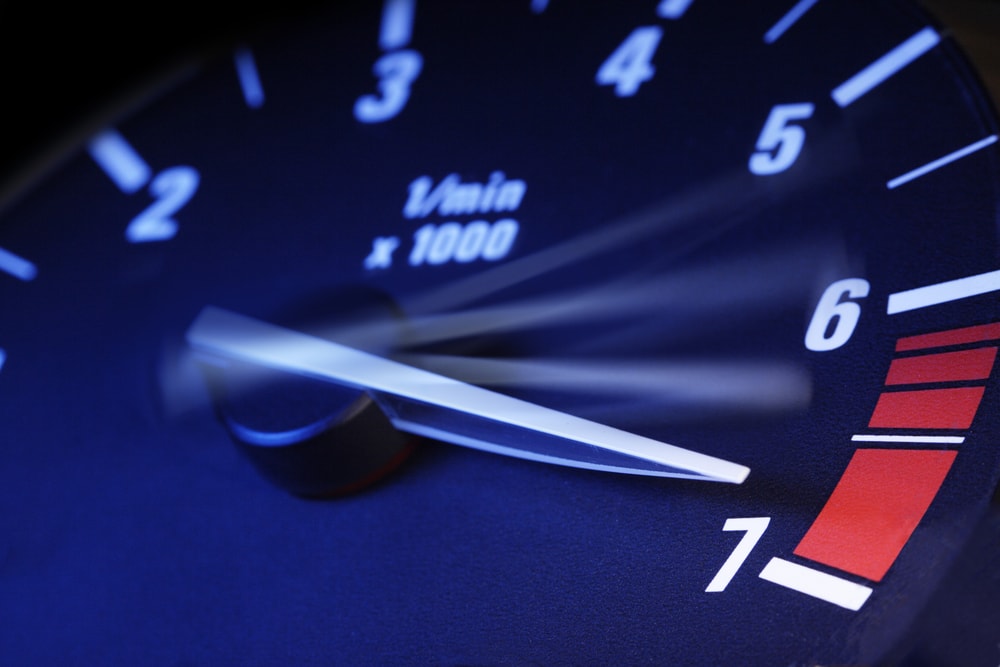Tachometer Basics: Every Little Thing You Need to Know for Accurate Readings
Tachometer Basics: Every Little Thing You Need to Know for Accurate Readings
Blog Article
Opening the Keys of Tachometers: Every Little Thing You Required to Know Regarding This Important Instrument in Your Vehicle
Understanding the intricacies of tachometers can give beneficial understandings into your car's performance and upkeep demands. From determining engine speed to deciphering the data it offers, tachometers function as an important tool for vehicle proprietors and lovers alike. By deciphering the mysteries behind this essential tool, you can unlock a wealth of details that can improve your driving experience and guarantee the long life of your automobile.
Significance of Tachometers
The significance of tachometers depends on their ability to give critical real-time data about an engine's rotational rate, enabling specific tracking and upkeep of machinery. By gauging the changes per minute (RPM) of an engine's crankshaft, tachometers supply important understandings into the engine's efficiency - tachometer. This information is important for making certain that the engine operates within its optimal variety, staying clear of prospective damage from over-revving or underperforming
Tachometers play a crucial role in assisting drivers and specialists identify any type of abnormalities in the engine's speed, which can suggest issues such as gas inefficiency, mechanical problems, or extreme pressure on the engine. By immediately identifying these concerns through tachometer readings, upkeep can be executed proactively, protecting against pricey fixings and downtime over time.
Moreover, tachometers are specifically vital in high-performance automobiles and equipment, where specific control over engine speed is necessary for optimal procedure. Competing autos, airplane, and industrial tools count on tachometers to deliver peak efficiency while keeping safety standards. Fundamentally, tachometers are not just instruments for determining rate however vital devices for making certain the smooth and effective operation of engines throughout numerous applications.
Exactly How Tachometers Procedure Engine Rate
Making use of sensing units that find the frequency of electrical pulses generated by the engine's ignition system, tachometers accurately gauge the rotational rate of an engine. By monitoring the rate at which these pulses are obtained, tachometers give real-time feedback on just how quick the engine's crankshaft is turning per minute, commonly described as changes per minute (RPM)
The tachometer's sensing unit, typically attached to the engine's ignition coil or ignition system wires, gets the electrical signals generated each time a cyndrical tube fires. These signals are after that converted into RPM analyses presented on the gauge or instrument collection within the driver's sight. Tachometers can be analog or digital, with contemporary vehicles frequently featuring electronic display screens for accurate and immediate RPM analyses.
This information is crucial for vehicle drivers to understand the engine's efficiency, prevent over-revving, maximize equipment shifting, and make sure reliable fuel usage. By properly determining engine speed, tachometers play a vital function in aiding motorists run their cars safely and successfully.
Translating Tachometer Readings
Having a clear understanding of how tachometers measure engine speed establishes the foundation for effectively interpreting click here to find out more the RPM analyses displayed. Interpreting tachometer readings is critical for ideal lorry performance and engine health and wellness. RPM (Revolutions Per Minute) readings on the tachometer suggest the rate at which the engine's crankshaft is revolving. When the engine is idling, the tachometer needle commonly rests around 600-1000 RPM, depending on the automobile. As you increase, the RPM will increase, showing the engine's higher rotational speed. When changing equipments in a hand-operated transmission vehicle, the RPM will drop as you involve the clutch and change equipments, after that climb again as you accelerate redirected here in the new equipment. Monitoring the tachometer can assist you establish the most reliable moving points to make best use of fuel economic situation and engine power. Additionally, irregular fluctuations or continually high RPM analyses can indicate possible issues with the engine that may need professional focus. By paying interest to the tachometer analyses and understanding just how to interpret them, you can guarantee your car runs smoothly and successfully.


Tips for Making Use Of Tachometers Successfully
To boost driving effectiveness and optimize engine performance, what key techniques can be carried out for properly using tachometers? Tachometers are important tools that supply real-time responses on engine rate, allowing chauffeurs to make enlightened choices for better efficiency - tachometer. Right here are some tips for using tachometers properly:
Recognizing Ideal RPM Variety: Familiarize on your own with the optimum RPM (Transformations Per Minute) range for your automobile. This array ranges various automobiles and is generally indicated in the proprietor's manual. Maintaining the engine within this array can boost fuel effectiveness and lengthen the engine's lifespan.
Shifting Gears at the Correct Time: Use the tachometer to determine the most effective time to change gears. Upshifting prematurely or too late can lead to lowered performance and performance. Purpose to change gears when the RPM reaches the ideal range for the discover here next equipment.
Checking Engine Tension: High RPMs for long term durations can stress the engine. Watch on the tachometer to stop over-revving, particularly during acceleration or when carrying hefty lots.
Tachometers and Lorry Upkeep
When taking into consideration automobile maintenance, tachometers play a vital function in keeping track of engine performance and spotting potential concerns. Tachometers supply necessary data on engine speed, permitting motorists and auto mechanics to guarantee that the engine is operating within the advised RPM variety. Frequently keeping track of the tachometer readings can aid determine problems such as engine misfires, damaged ignition system, or concerns with the gas delivery system. By taking note of the tachometer, motorists can avoid too much stress on the engine, which can lead to pricey repair work down the line.
Along with discovering potential problems, tachometers can additionally aid in enhancing gas efficiency. By maintaining the engine rate within the optimal variety, vehicle drivers can improve their gas mileage and minimize gas consumption. This not only profits the chauffeur's budget yet also contributes to ecological preservation by lowering damaging exhausts.
Conclusion

Report this page